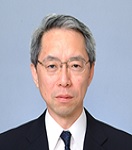
Yoshitomi Morizawa
Asahi Glass Co., Ltd, Japan
Title: Environmentally benign organohalogen chemistry in asahi glass
Biography
Biography: Yoshitomi Morizawa
Abstract
Fluorinated organic compounds are widely applied in day to day life and in industry, especially in the field of specialty chemicals such as plastics, elastomers, membranes, textile finishes, coatings, pharmaceutical drugs and agricultural agents, based on the unique properties of fluorine atom(s). Among them, perfluorinated compounds are important components in industrial materials, taking advantages of thermal stability and chemical resistance for infrastructural architectures and electronics applications. However, there were some limitations in the synthesis of the perfluoro building blocks or the precursors because of the difficulty of perfluorinated moiety synthesis and C-F bond forming reaction. The direct fluorination method with fluorine gas in liquid phase overcame the subject, i.e. all the hydrogen atoms in the molecule which is synthesized at will using normal hydrocarbon chemistry are replaced with fluorine atoms at once, even in the case of having functional groups such as carbonyl, ethereal group, etc. The process contributes the reduction of the environmental burden, since the product or the intermediate is used as a solvent, and hydrogen fluoride is the only cogenerated product, theoretically1, 2). On the other hand, methacrylate resin (PMMA) is one of the most important polymers used mainly as optical materials. The monomer, methyl methacrylate (MMA), is manufactured by acetone cyanohydrin (ACH) method, C4 direct oxidation method, and alpha process etc. However, it is not possible to avoid the usage of hydrogen cyanide gas and the byproduct of ammonium sulfate contaminated with organic compounds in ACH method, for example. We have newly developed the efficient method starting with acetone and chloroform in the presence of base and acid catalyst, via chloroisobutyroyl chloride, to produce MMA3). In this case, hydrogen chloride is only a byproduct. These technologies with controlling the high reactivity of fluorine atoms and transforming the chlorinated compounds to the desired constructions could contribute to the establishment of the environmentally benign processes.

